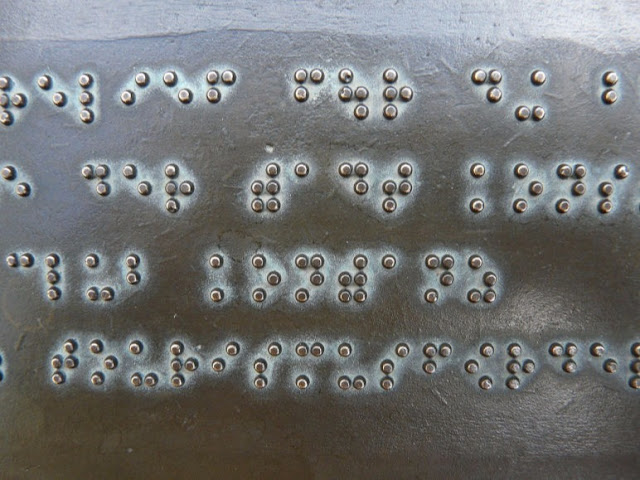Braille is not a language. Braille is a tactile reading and writing system that is used by blind and visually impaired people and was named after its creator, Louis Braille.
Braille is very important to the lives of visually impaired people, because the ability to read and write in braille opens the door to literacy, intellectual freedom, equal opportunity, and personal security. Even though Braille is mainly used by blind or deafblind people, teachers, parents and others who are not visually impaired tend to read Braille by sight rather than by touch.
Braille developed a code for the French alphabet. He published his system in 1829. The second revision, published in 1837, was the first small binary form of writing developed in the modern era. Braille's system was not used much in education until, many years after his death, it was recognized as a revolutionary invention, and it has been adapted for use in different languages.
The Braille System consist of raised dots. The basic braille alphabet, braille numbers, braille punctuation and special symbols characters are made up from six dots in a "cell". Picture the side of a dice with the number 6. Three dots each in a grid of two parallel vertical lines are the basic setup for braille. Different combinations of the dots represent different letters, numbers, and symbols. Nowadays, the braille system includes also mathematics and scientific characters, music, computer notation and foreign languages.
Blind and visually impaired people communicate via braille in various ways. Most known probably is "reading" braille with one's fingers and writing by means of manual braille machines which resemble old-fashioned typewriters - just with only 6 keys - and "emboss" the dots. Today braille writing devices come in a vast variety: from old-school slate and stylus approaches to electronic braillers with built-in screen and speaker that provide instant visual and audio feedback. "Braille printers" are more accurately referred to as "braille embossers", since they render text as tactile braille cells, and therefore require heavyweight paper that won't be punctured by the embossing pins. In general, braille also requires more pages for the same amount of information compared to regular paper print with ink.
Modern technology also offers options like braille readers/keyboards for computers as well as applications for reading and writing braille even on smartphones.

